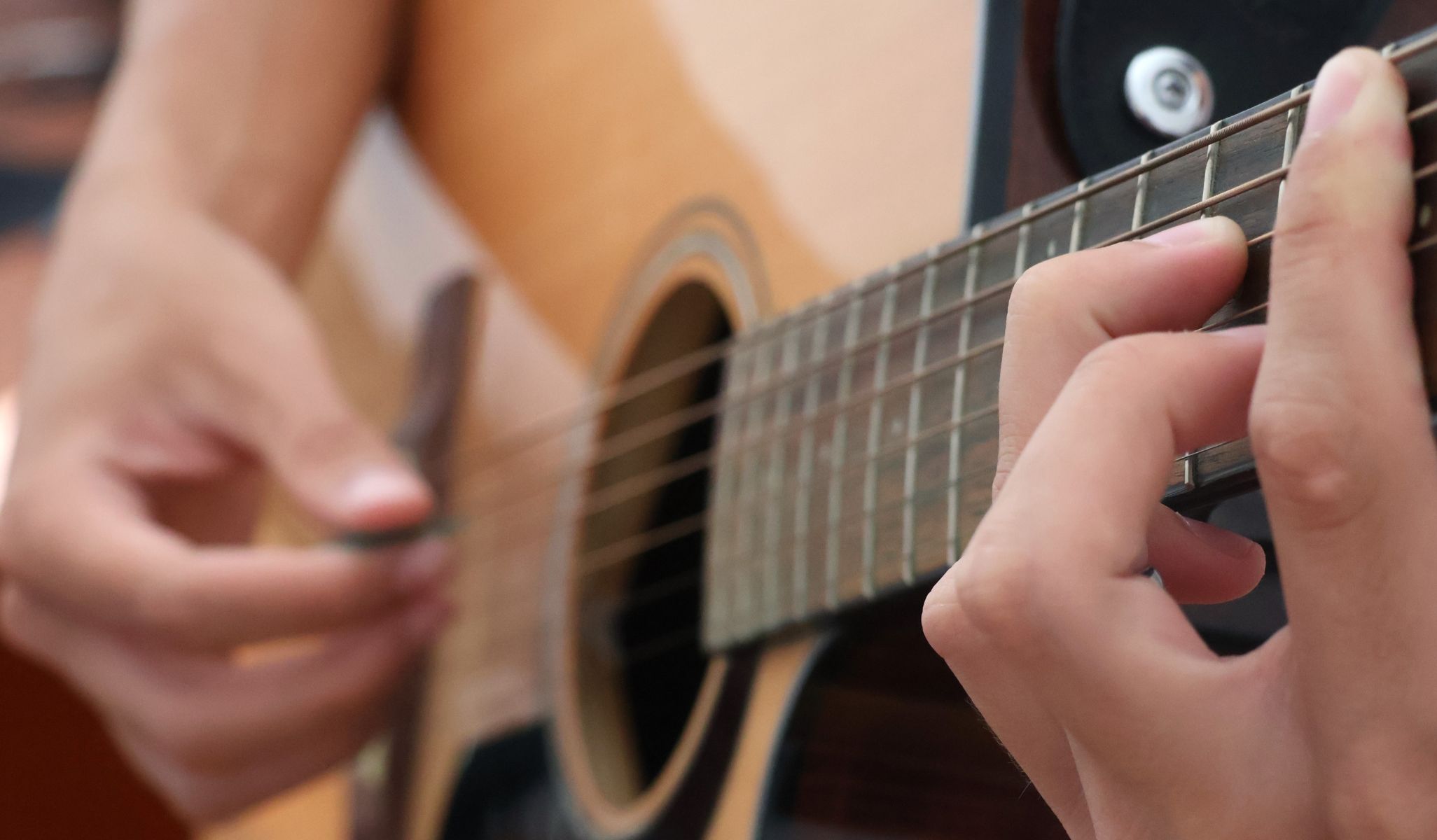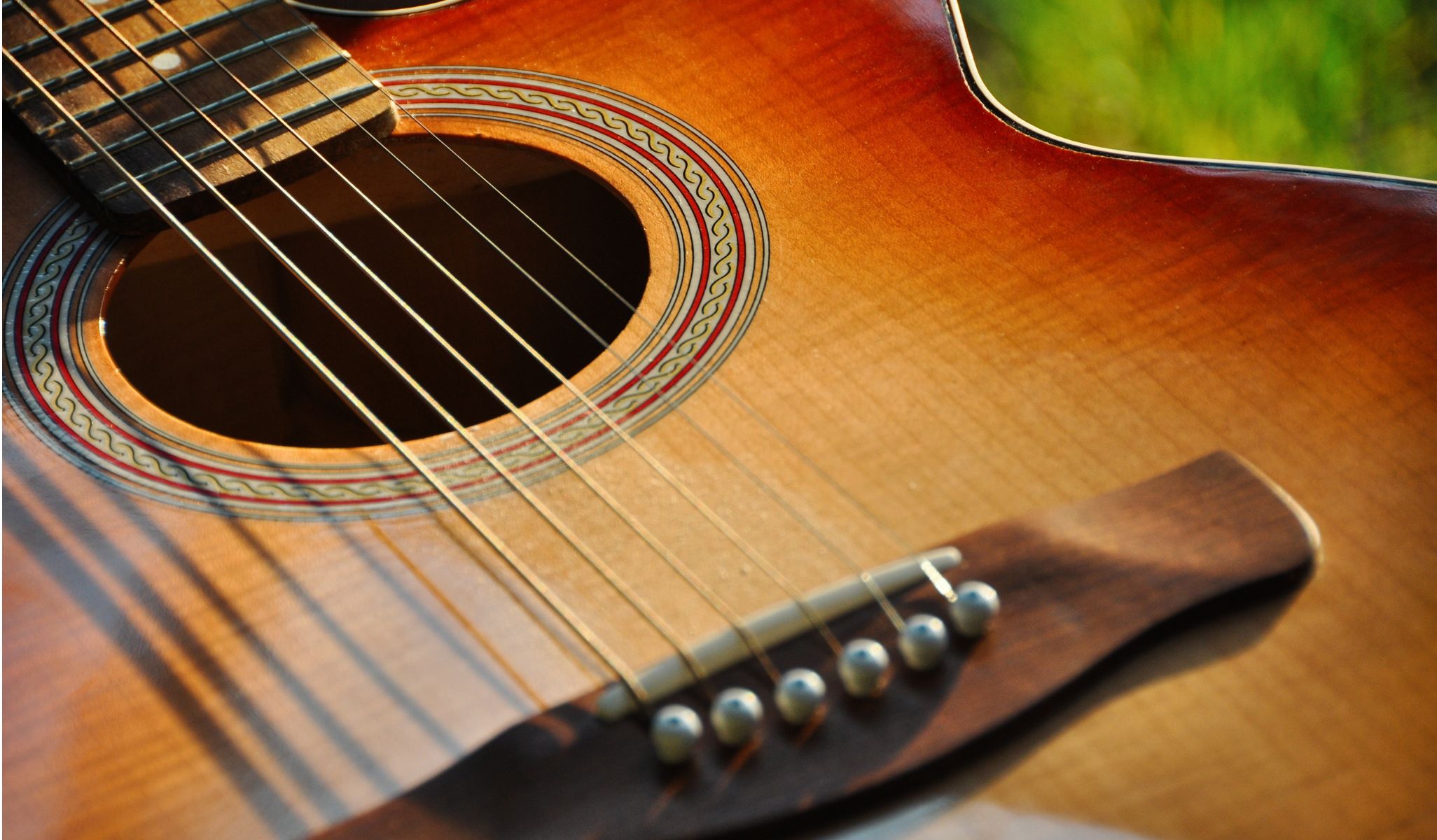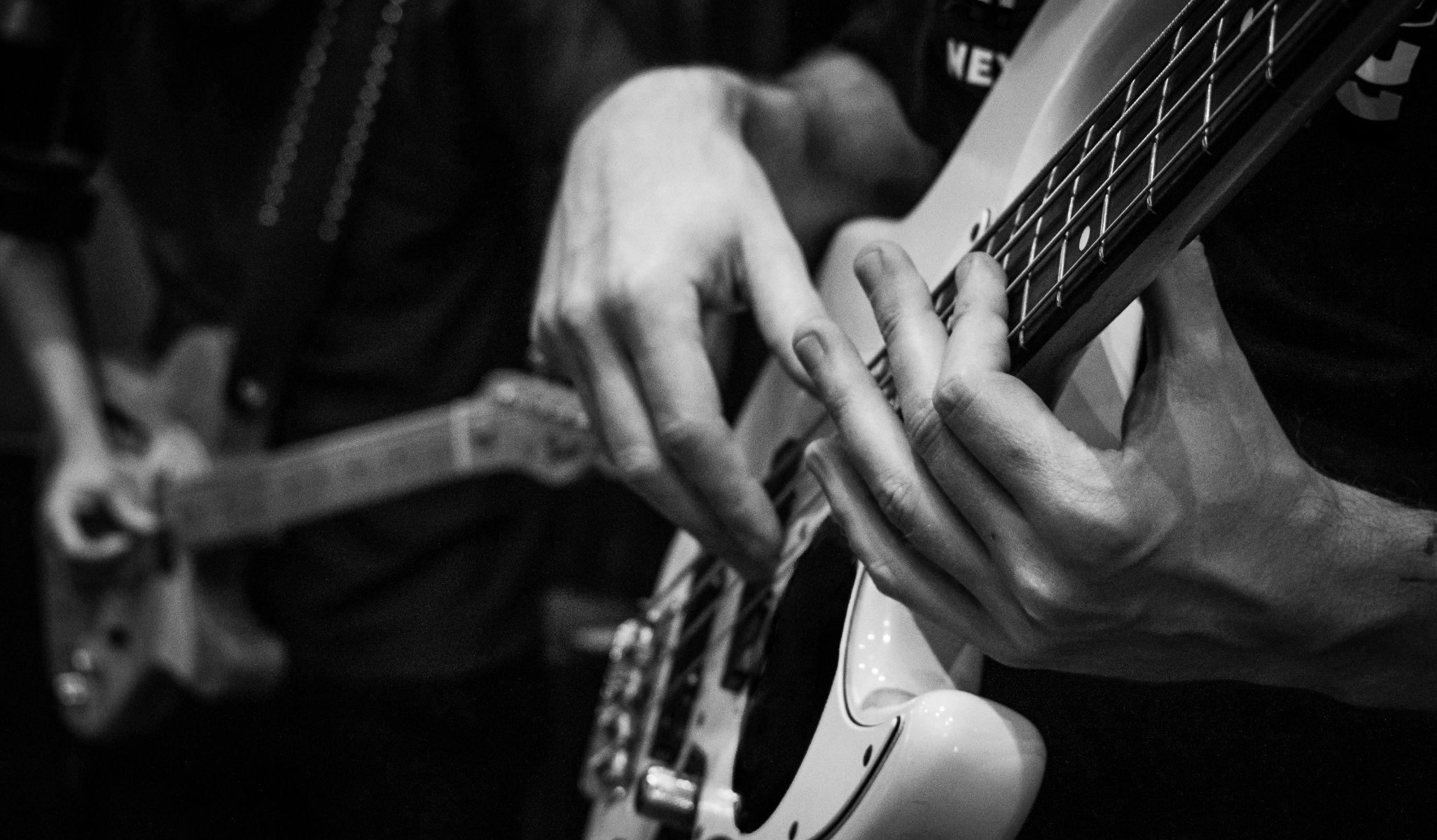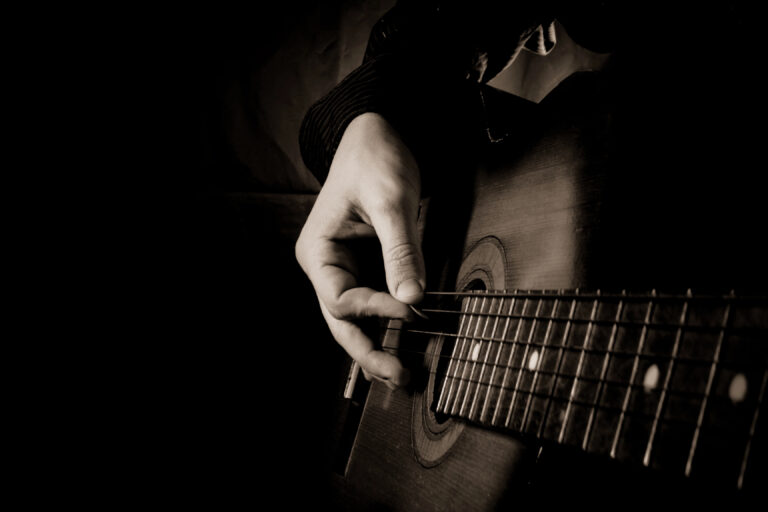The 9 Most Overrated Guitar Tips (And What to Do Instead)
Every guitarist has heard advice that’s supposed to “change your playing forever.” But let’s be honest.. a lot of those so-called golden rules are either outdated or just plain wrong.
Sure, they might sound good in theory, and maybe they even help in the early stages. But if you’ve been playing for a while and feel stuck, it’s probably because you’re following advice that doesn’t actually get results. Yep, I said it!
In this post, I’m going to expose 9 of the most overrated guitar tips floating around, explain why they don’t work the way they are “supposed to”, and most importantly show you what you should do instead.
Join Our Guitar Facebook Group!
If you haven’t yet, be sure to join our Facebook group: Intermediate Guitar – Leveling Up by clicking here!
9. Practice 8 Hours a Day to Get Good
This one sounds hardcore, and it makes sense why so many players believe it. If you want to be great, you should live with your guitar in your hands… right?
Uhh no. Not exactly.
The problem with marathon practice sessions is that they often turn into hours of unfocused noodling (IYKYK).

So basically, instead of improving, you build sloppy habits and burn yourself out. It’s like going to the gym and doing random exercises for 8 hours straight; you’ll be sore, but you won’t necessarily be stronger.
What I Recommend Instead:
Focused, intentional practice beats raw hours every. single. time.
- Aim for 20-40 minute sessions where you drill specific skills (scales, chord changes, rhythm, etc.).
- Break practice into mini-blocks like 10 minutes technique, 10 minutes fretboard knowledge, 10 minutes improvisation.
- Use warmups that connect to the music you’re actually playing instead of empty finger exercises. If your warmup makes you sound like you’re actually playing something cool, you’ll stay motivated and get better.
The bottom line is, it’s not about how much you practice, but how you practice.
8. Learn Songs Only by Tabs
Most of us start out with tabs. They’re everywhere online and they make it easy to pick up songs quickly. The trouble comes when tabs become the only way you learn.
You can follow them note for note and still wonder why the song doesn’t sound quite right. That’s because tabs are missing the heartbeat of the music. They leave out the phrasing and the subtle touches that give a riff its character.
What I Recommend:
A better approach is to treat tabs as a safety net.
Before you look something up, try to figure out a small piece on your own. Even a few notes by ear will sharpen your listening skills.

Once you do check the tab, play along with the recording and notice the details the chart leaves out. Sing the melody while you play it to strengthen the connection between your ear and your hands.
7. Stick to the First Pentatonic Box
That first pentatonic shape feels like a safe place to land. Most players get comfortable there and spend months, even years, circling the same handful of notes. It works well enough, but over time your solos start to blur together.

What I Recommend Instead:
Think of that box as a doorway instead of a destination. The scale stretches all the way across the fretboard, and when you follow it into new areas, the neck suddenly feels wider and more open.
A good trick is to chase the root note into another octave and let that lead you into a fresh position. You can also shift the mood completely by sliding the shape into its relative key. The fingering doesn’t change, but the feel of the music does.
That first box will always have its place, but it works best when it’s connected to the rest of the neck. When those shapes connect, your solos flow with more variety and purpose.
6. Barre Chords Are All You Need
Barre chords are definitely a rite of passage. Once you conquer that F chord shape, it feels like you’ve unlocked the whole fretboard.

And don’t get me wrong… barre chords are useful (duh), but if they are the only tool in your rhythm toolkit, your playing will sound stiff and muddy.
What I Recommend:
Instead of treating barre chords as the finish line, use them as a segue into more interesting chord ideas.
- Learn triads: These are stripped-down, three-note chords that are easier to play and often sound cleaner.
- Explore inversions: Rearrange the notes of a chord so a different one lands in the bass. This simple shift makes familiar chords sound fresh and helps your progressions connect more smoothly.
- Add extended chords: Use 7ths, 6ths, 9ths, and other variations to give your playing more color and personality. These chords add depth beyond the basic major and minor shapes.
- Mix chord types: Blend open chords, barre chords, and triads to create progressions that sound fuller and more dynamic.
Above, you can check out my YouTube video where I share a lesson on how to play triads (a great way to move beyond barre chords).
5. Scales Are Just for Speed
A lot of players run scales up and down as quickly as they can, hoping that speed alone will turn into music. The result usually sounds more like an exercise than a solo.

Scales are far more useful when you see them as a map for melody and expression. They show you where strong notes sit and give you options for shaping a line that feels deliberate.
What I Recommend Instead:
Try breaking a scale into arpeggios so you are outlining chord tones instead of drifting through random notes.
➡️ Here is my full YouTube lesson on argeggios!
Another approach is to step through the scale in wider leaps, called intervals. Moving in broken 3rds, 4ths, or 5ths makes the line feel more musical and much less like a drill. You can also build tension and release by grouping notes in uneven numbers or by leaning into phrasing with slides and vibrato.
Scales work best when you treat them as music from the start. Focus on shaping melodies, and your playing naturally develops both purpose and flow.
4. Memorize Every Chord Shape
I remember flipping through chord books when I first started playing and thinking the secret must be in knowing every single shape on the page. The more diagrams I memorized, the better I’d be… right?
What actually happened was a head full of finger positions I could barely remember, and frustration. Lots of frustration.
I’m gonna let you in on a little secret.. music is not about memorizing endless diagrams.
It is about understanding how chords are built.
What to Do Instead
I know music theory freaks a lot of people out, but hear me out..
You do not need to dive into a mountain of terms and symbols. Start simple!
Learn that a major chord comes from the first, third, and fifth notes of a scale. A minor chord swaps the third for a flat third. That is enough to unlock a whole new way of seeing the fretboard.

When you know the formula, shapes stop feeling random. You start recognizing why that C major chord works, and then you can rebuild it in a different spot without needing a book to tell you how.
Once the fretboard starts to make sense, chords feel more like building blocks than fixed shapes.
3. Always Use a Metronome
The metronome was one of the first tools people told me to practice with. It did help me clean up my timing, but when I leaned on it too much, my playing started to feel stiff. The click didn’t teach me how to groove with the music.
What really made a difference was playing along with drum beats and backing tracks. That’s when I started to understand rhythm as something you feel.

What I Recommend:
Use the metronome as one tool, but not the only one.
- Play with backing tracks: Jamming to real songs makes rhythm sink in a way a click never will.
- Work with drum grooves: Playing to a real beat helps you pick up the feel.
- Experiment with subdivisions: Clap or count 8th notes, triplets, and 16ths until the rhythm feels natural.
- Bring the metronome back later: Once you’ve got a decent sense of groove, the metronome is great for tightening things up.
2. Theory Will Kill Your Creativity
A lot of players worry that learning theory will take the fun out of guitar. I used to think the same thing. I thought that once I knew the “rules,” I would lose the freedom to just play what I felt.
What actually happened was the opposite.

Theory did not box me in. It gave me ways to make sense of the fretboard. Suddenly I could see why certain chords worked together, how keys connected, and where to go when I was stuck.
What I Recommend:
You do not need to study like you are in a classroom. Just start with one thing!
Learn the Circle of Fifths and use it as a quick guide for changing keys or building progressions.
Try out relative majors and minors. Moving between them can change the feel of your playing in a big way.
Take a song you already love and notice what is happening in the chords. Even noticing one or two patterns is enough to spark ideas you would not have found otherwise.
The more you see theory in action, the more it feels like a set of shortcuts.
1. Just Play What Feels Good
“Play what feels good” sounds like solid advice, and at first it is.
The problem is that it usually keeps you circling the same ground. Without a little structure, you end up leaning on the same habits and licks, which makes progress slow.

Feel is important, but it works best when it has some direction behind it.
Feel is essential, but feel without fundamentals usually leads to frustration.
What I Recommend:
Spend part of your time jamming freely and part of it on focused practice. Another great recommendation is to record yourself so you can hear what actually works, not just what feels good in that moment.
You should also give yourself small challenges that push you forward, like writing a solo in one position or shifting a riff into a different key.
The goal is to let your creativity run wild while still giving it a framework.
A Final Note
The guitar world is full of advice. Some of it helps, and some of it gets repeated so often that it starts holding players back.
If you notice yourself stuck on one of these “golden rules”, shift your focus toward habits that push you forward, like practicing with intention and exploring how chords fit together.



